
When Dodge’s boss Tim Kuniskis announced last summer that the brand was working on an electric vehicle, a great many Mopar diehards were not too happy. Since most electric vehicles are designed purely to get the best range possible, they are not much fun to drive. Sure, most of them offer impressive acceleration figures, but other than the top of the line Teslas, none of them do anything special when it comes to performance abilities.
On top of the lackluster performance and poor driving dynamics, most electric vehicles share the same basic physical appearance. The Ford Mustang Mach E, the Toyota Prius, every Tesla, the Audi eTron and most others all have the same silhouette – what Kuniskis describes as a melting jelly bean. For someone who prefers the look of a modern muscle car like the Dodge Challenger, the appearance of the electric vehicles currently on the market is simply unacceptable.

In short, buying an electric vehicle over the past few years meant that you had to settle for poor driving dynamics, unimpressive performance and the blandest exterior styling of any segment. Those electric vehicles are essentially the polar opposite of what modern Dodge buyers want from their vehicles. With the direction of federal regulations on vehicles, automakers are more or less forced to shift to electric power.
So what does Dodge do when they are forced to make an EV? They make the most badass electric concept car that has ever graced the internet, with plans to produce something very similar for the 2024 model year. That car is the Dodge Charger Daytona SRT Concept, and it represents the next generation of the legendary Charger name while also being the brand’s first plug-in hybrid.
Dodge has not provided any real power or performance numbers for the Charger Daytona SRT Concept, but the brand has stated that the model shown here will beat the SRT Hellcat in every performance metric. The SRT Hellcat offers 707 or 717 horsepower and 650 or 656 lb-ft of torque, depending on the model year. With the 8-speed automatic, these “standard” Hellcats (non-Redeye), can comfortably cover the quarter mile in the low-11-second range while reaching an official top speed of 199 miles per hour.
If the Dodge Charger Daytona SRT Concept shown here will beat the Hellcat in every performance metric, then it will run a 10-second quarter mile and reach speeds over 200 miles per hour. Oddly, in the official press release for this car, the brand referenced the fact that the original Charger Daytona was the first NASCAR vehicle to break the 200 barrier.
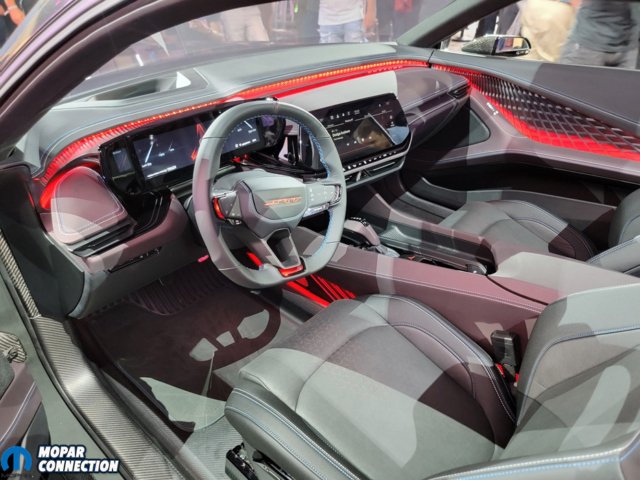
Of course, based on the output of other EVs, delivering more than 717 horsepower and 656 lb-ft of torque should be no problem, but the key to that is the standard all-wheel-drive system, allowing the car to efficiently put all of the power to the road.
Speaking of “all of the power”, the new Dodge EV comes with the PowerShot feature that was introduced on the new Hornet R/T PHEV. This system allows 15 seconds of additional horsepower, leading to the best acceleration numbers from a stop or when on the move.
In the Hornet, it offers 25 extra horsepower and while no gain numbers have been stated for the Charger EV, we expect that figure to be much higher. The feature can be used over and over, with 15-second system rests between each use. The Charger EV will also have an array of drive modes that include Track, Drift, Drag and Donut.
The only specifications that Dodge has offered on the Charger Daytona SRT Concept powertrain is that it will be offered in 400- and 800-volt, with three models offered at the dealership. Direct Connection will then offer two upgrade packages for each of those models, leading to a total of nine configurations.
The most powerful of those nine is the Banshee, which is the package shown on the concept car. This package has the 800-volt drivetrain, 305 millimeter wide front tires, 325 millimeter wide rear tires, massive Brembo brakes and the distinct badges on the fenders.
There are two key areas where the Dodge Charger Daytona SRT Concept differs from other electric vehicles. First, it has a multi-speed transmission with electromagnetic shifts, leading to a less linear acceleration feel and more familiar driving characteristics.
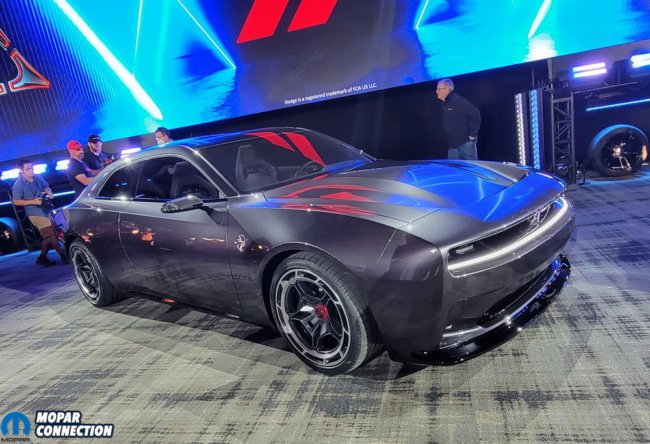
The second is the Fratzonic chambered exhaust system, which uses a system of tuned piping to create a very unique roar when the vehicle is active. This exhaust system features a low grumble at idle and when you rev the motor, it screams like no other car I have ever heard, reaching 126 decibels.
That is as loud as the Hellcat cars, but it doesn’t sound like a fake V8 sound. The team created an exhaust note we have only ever seen and heard in movies like The Wraith. People who don’t like that electric cars are so quiet will not have to worry about that with the Charger EV, as it is crazy loud under throttle.
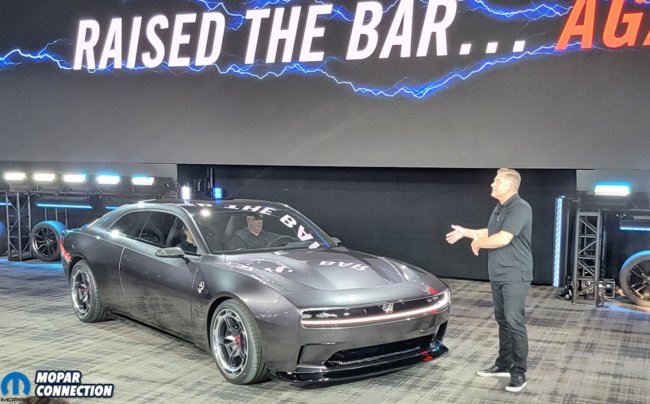
Ultimately, the people who hate the shift to electric will hate the sound and everything else about the drivetrain. For those who are even loosely interested in an EV in the future, the Dodge Charger Daytona SRT Concept makes sure that the cars that you are beating can hear your EV roar.
While you may hate the fact that the Dodge Charger Daytona SRT Concept has an all-electric drivetrain, it is hard to hate the exterior design. This car looks like a futuristic take on the 1968-1970 Charger through the front and sides, looking a little like a late-60s Barracuda from the back.
Looking at the front end from across the room, the grille area of the Dodge Charger Daytona SRT Concept looks a great deal like the 1969 grille, with a recessed center section with a middle divider. The grille area is trimmed in bright white LED that matches the glowing Fratzog logo in the middle.
When you look up close, you can see that this new Charger grille is not enclosed like the classic. Instead, the upper portion of the front fascia is actually a small spoiler and the grille area is sloped, forcing air up across the curved and over the sleek roof line. Dodge calls this front end design the R-Wing and it is the reason why the team was able to achieve the slippery aero properties needed of an EV without looking like every other EV on the market today.
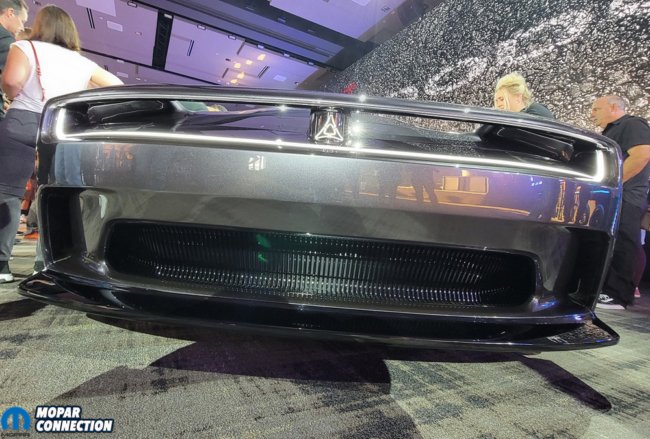
Out back, the Dodge Charger Daytona SRT Concept has the newest variation of the “race track taillight” with a red glowing Fratzog in the middle. There are air curtains built into the rear fascia and along the bottom, the diffuser has the Fratzonic logo, pointing out the unique exhaust system.
Along the sides, the Dodge Charger Daytona SRT Concept has a longer roof and a more fluid silhouette than the second generation muscle cars, but it is clear that those early models were the inspiration for this whole car. There are no badges, other than the huge Banshee face logo, but the odds are good that no one will ever mistake this for any other electric vehicle on the street. Most importantly to many, the Charger is once again a two-door model.
Now we come to the area where some people will spend the most time with the Dodge Charger Daytona SRT Concept – the tech heavy cockpit. This Charger has a 2+2 seating configuration, with four race-inspired bucket seats constructed mostly of lightweight carbon fiber.
The exposed carbon fiber weave on the back of the seats creates a very sleek and sporty appearance, while the thin construction frees up space for passengers’ legs. For a two-door coupe, there is a ton of room in the rear seating area. There is also a large cargo area under the glass hatch, but if you need even more space, the rear seats quickly and easily fold flat.
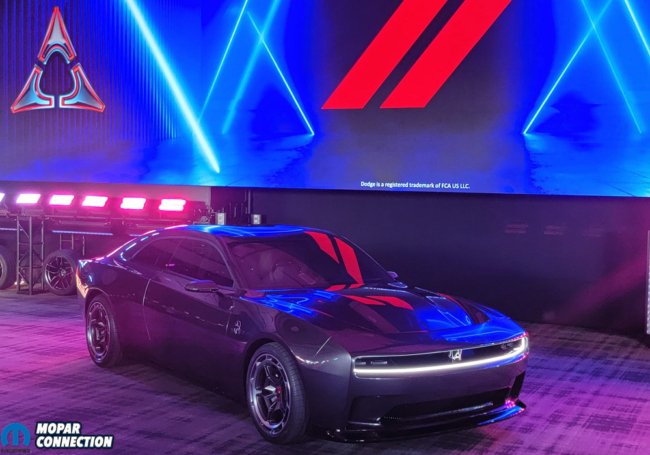
In terms of interior technology, it should come as little surprise that the Dodge Charger Daytona SRT Concept has the best that Stellantis has to offer. A new, thin-bodied, flat-bottom steering wheel is positioned over a 16-inch curved digital gauge cluster screen and next to it, a 12.3-inch infotainment screen running the latest UConnect 5 software.
The infotainment screen controls pretty much every aspect of the car – from the sound system to the drive modes – but there are also some dedicated controls on the center console, between the front seats. This is where you will find the Start/Stop button, along with a button for Launch Control, Traction Control and the other high tech helpers, such as Lane Departure Warning and Parking Assist.

Finally, the unique pattern from the upper, illuminated portion of the dashboard flows through the doors with a sort of circuitry feel to it, with more of this unique sculpting running through the storage compartment under the center console. Of course, pretty much everything in the cabin that isn’t carbon fiber or doesn’t light up is made from leather with contrasting stitch work, providing the premium feel that buyers would expect from the next generation of premium Dodge muscle cars.




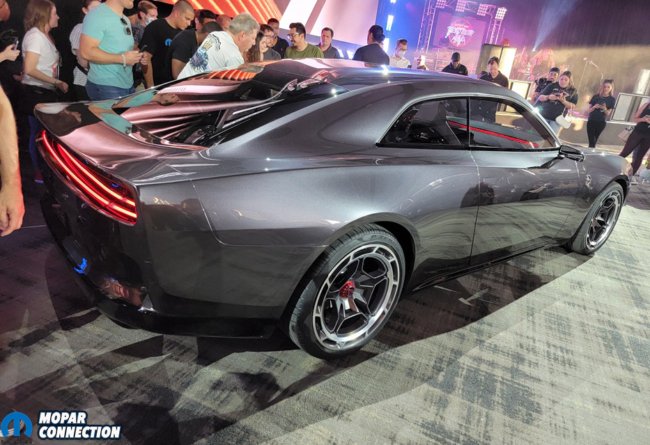
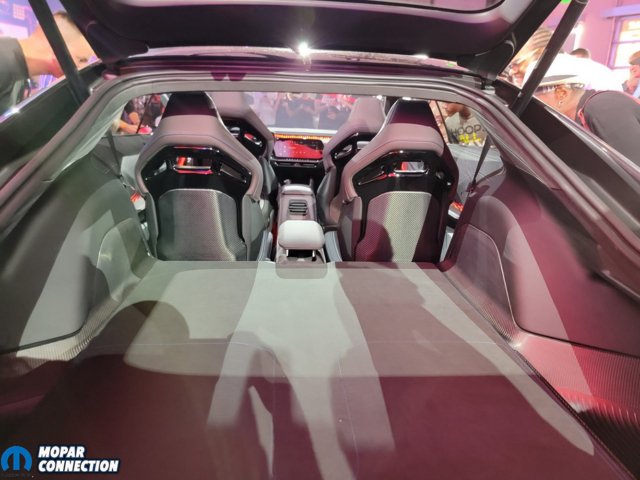

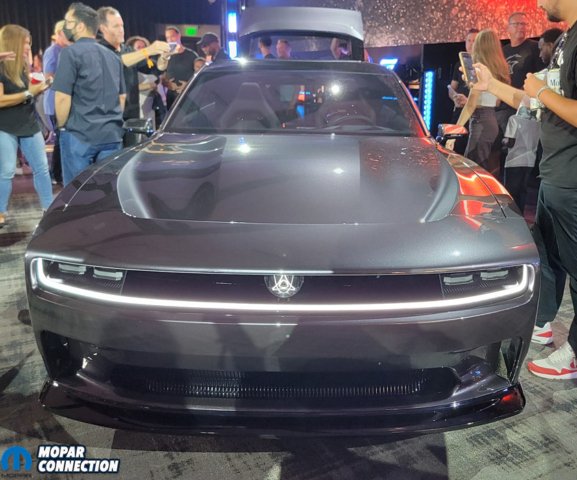


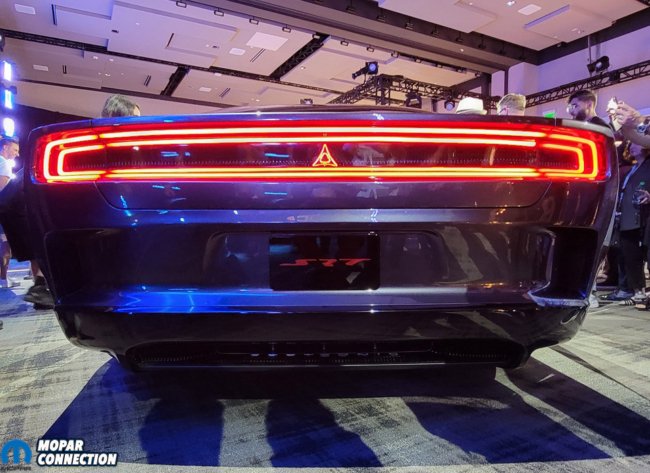
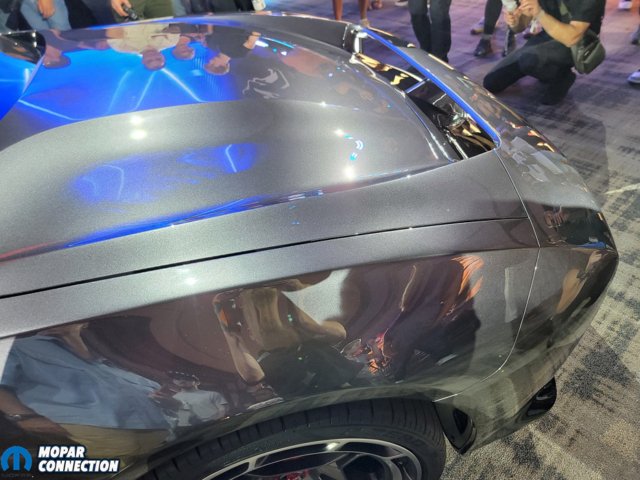
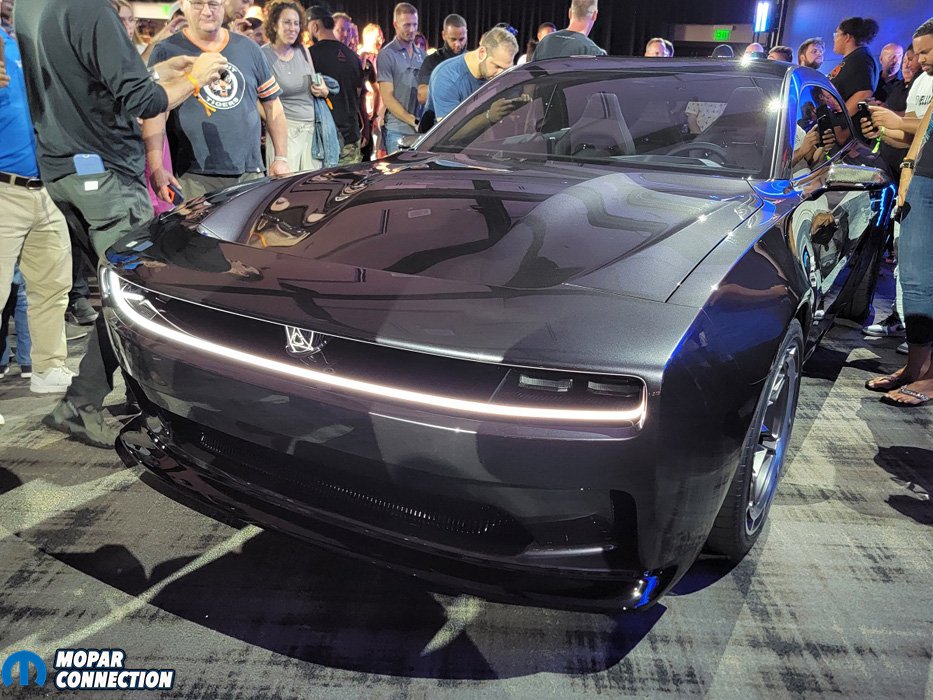

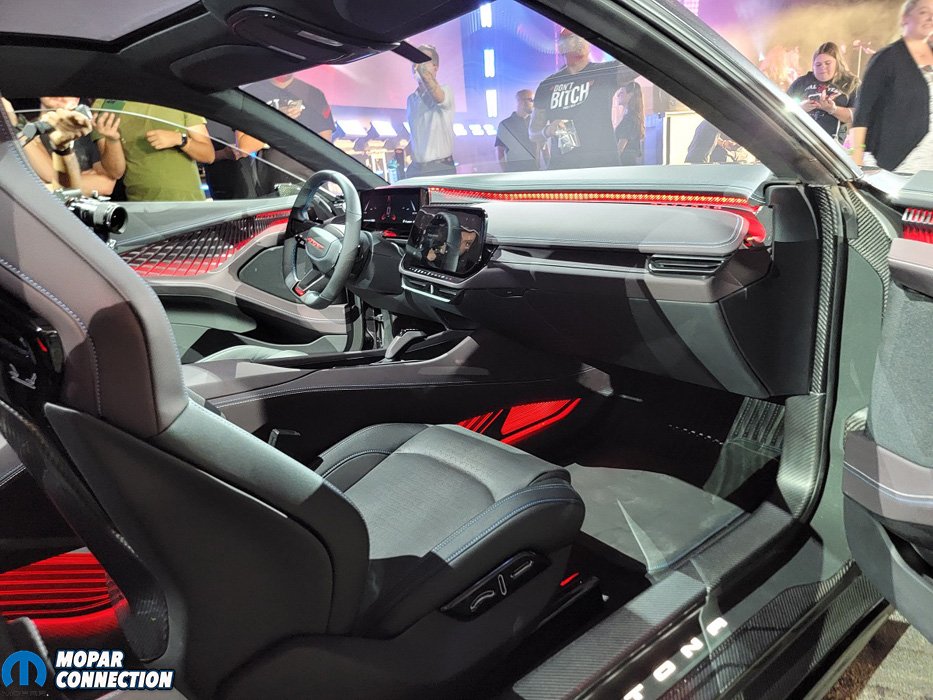
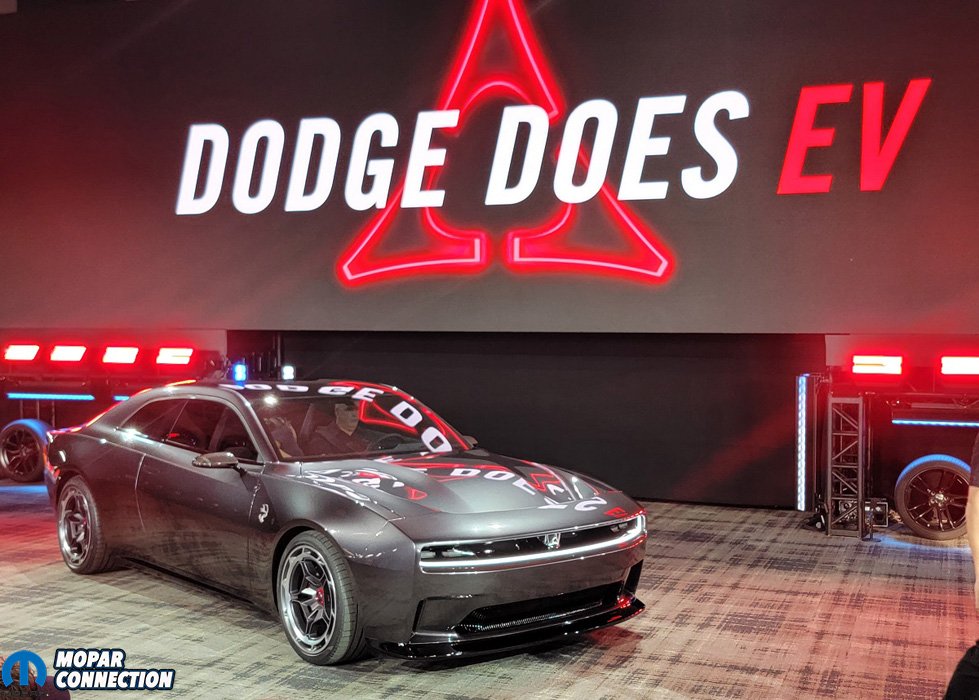
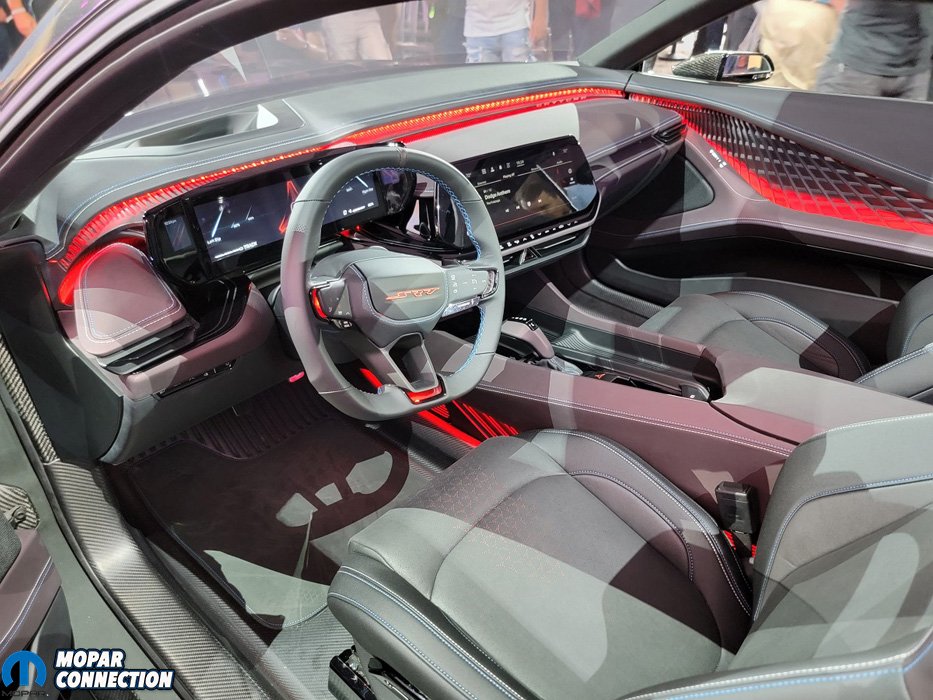
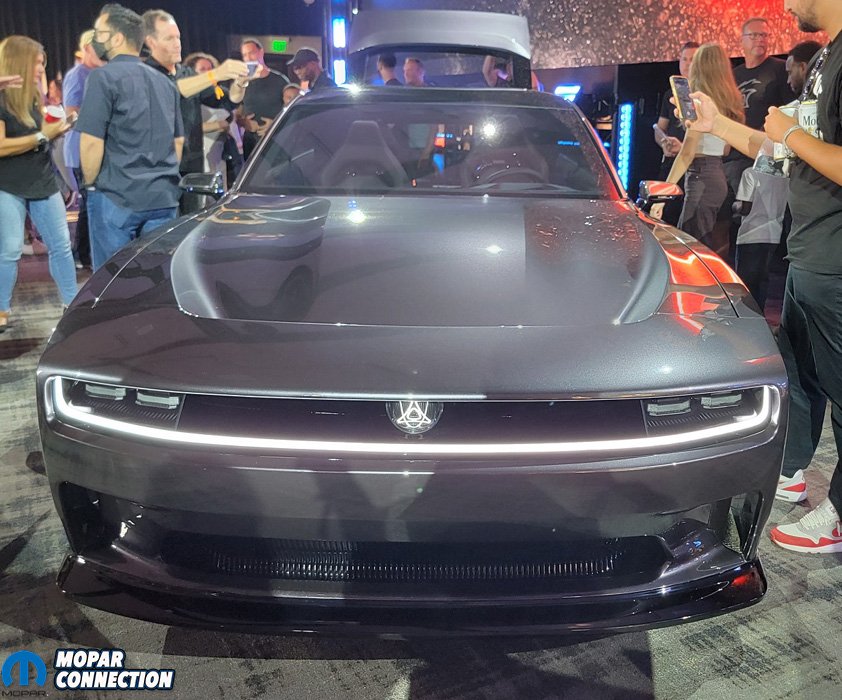
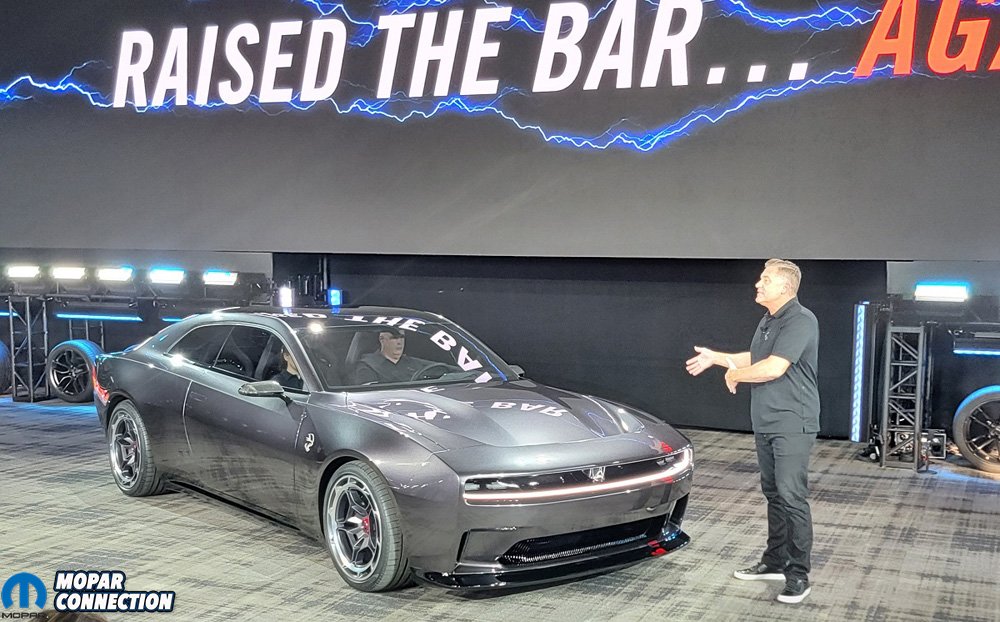



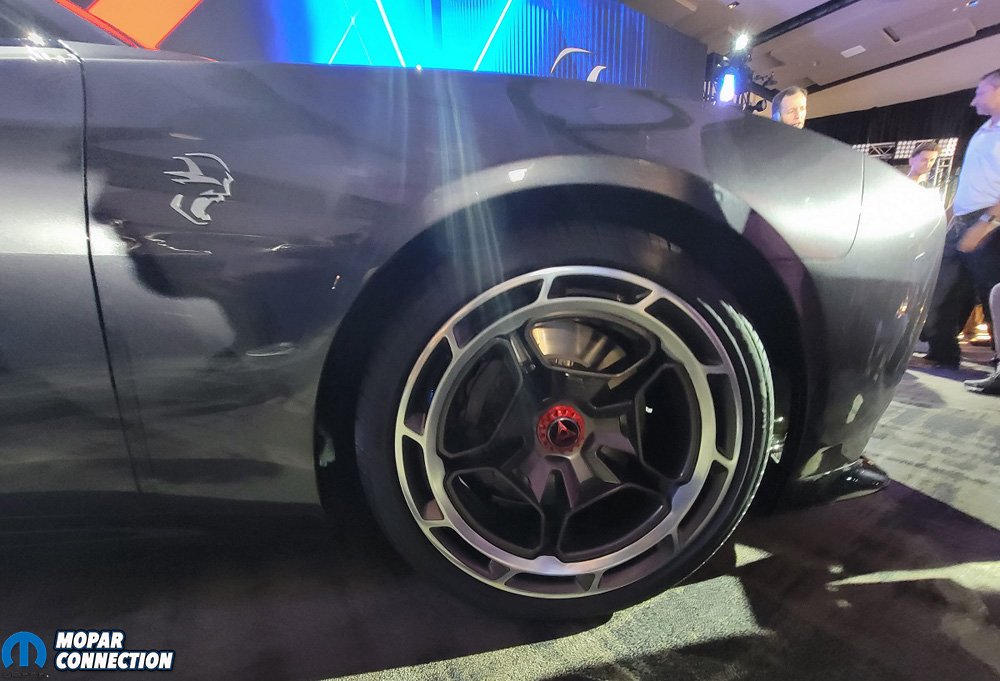
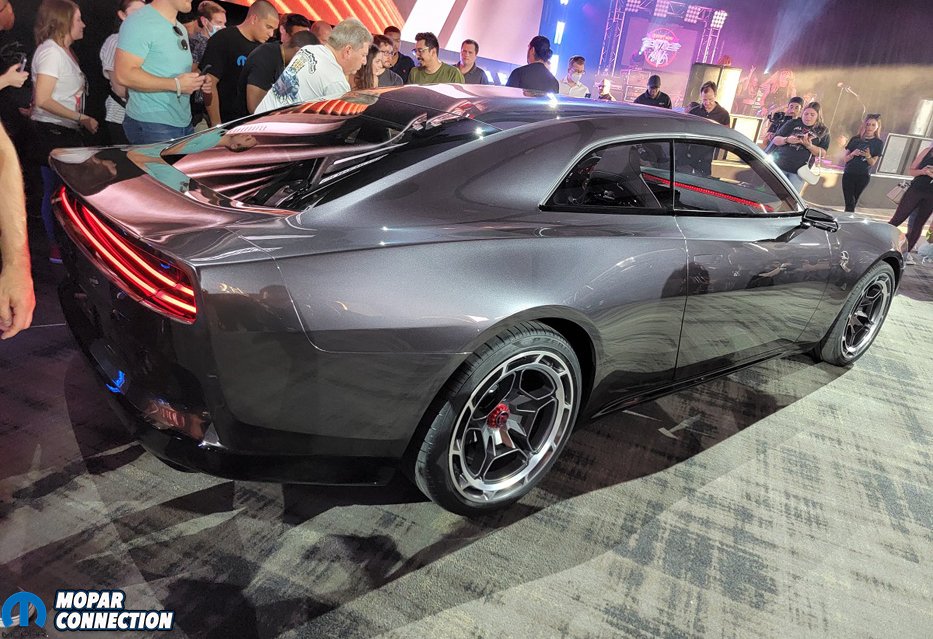
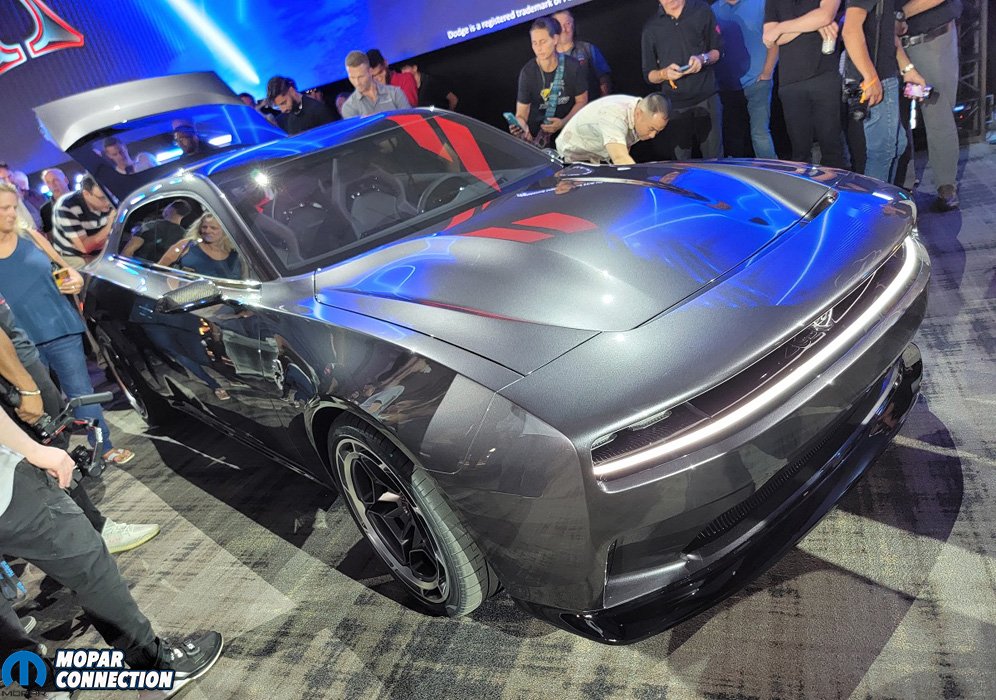
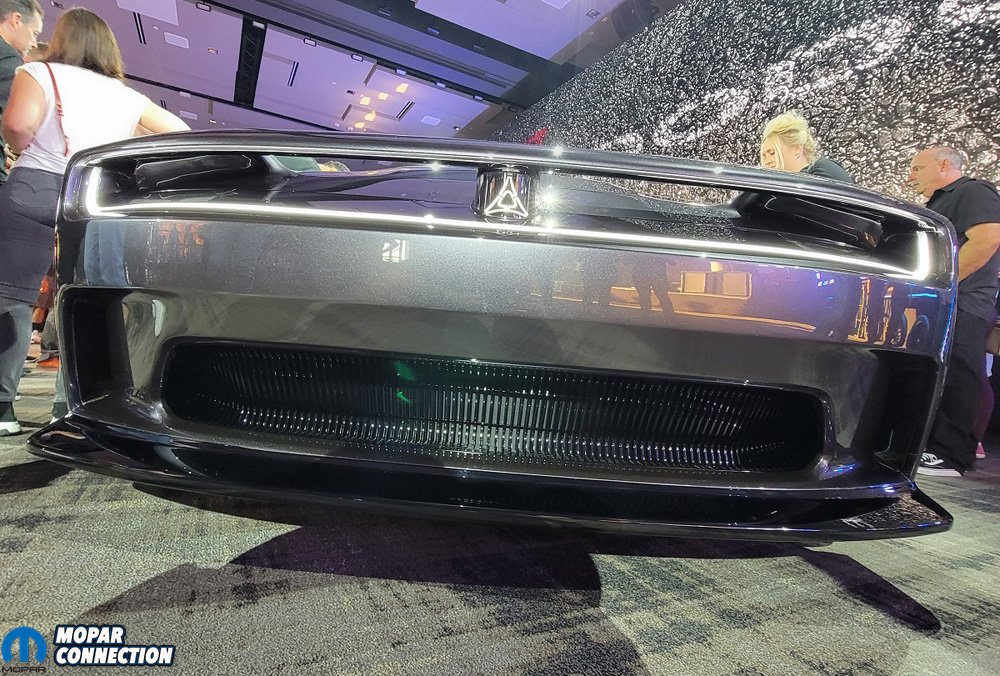
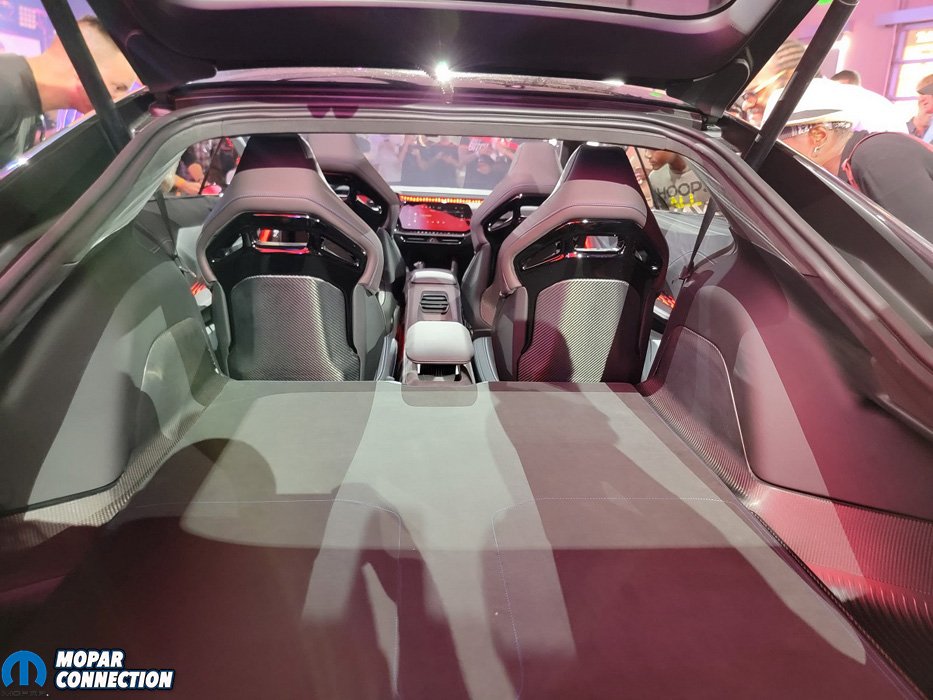
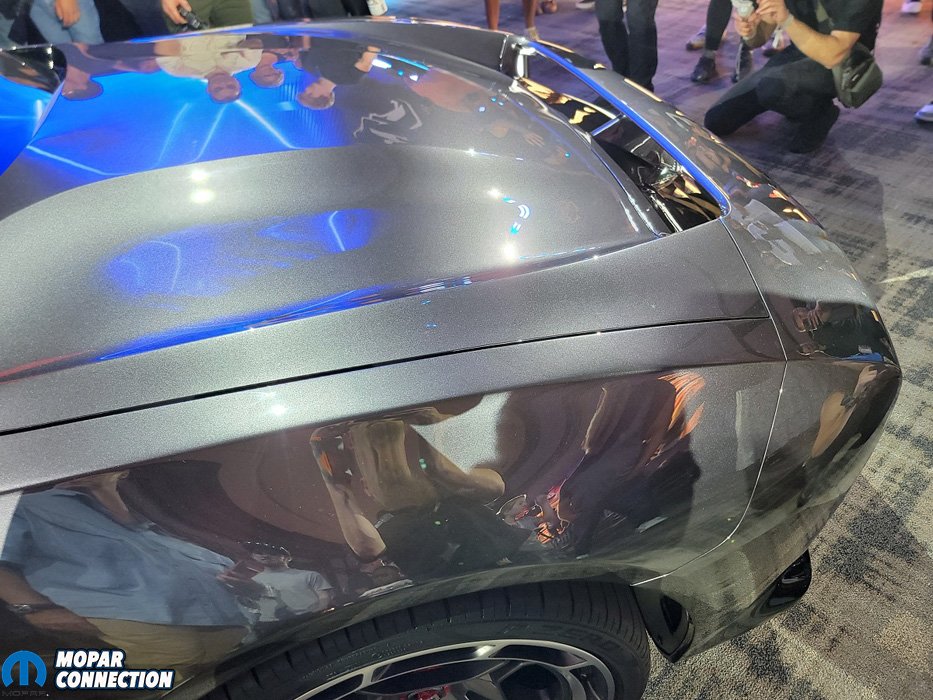


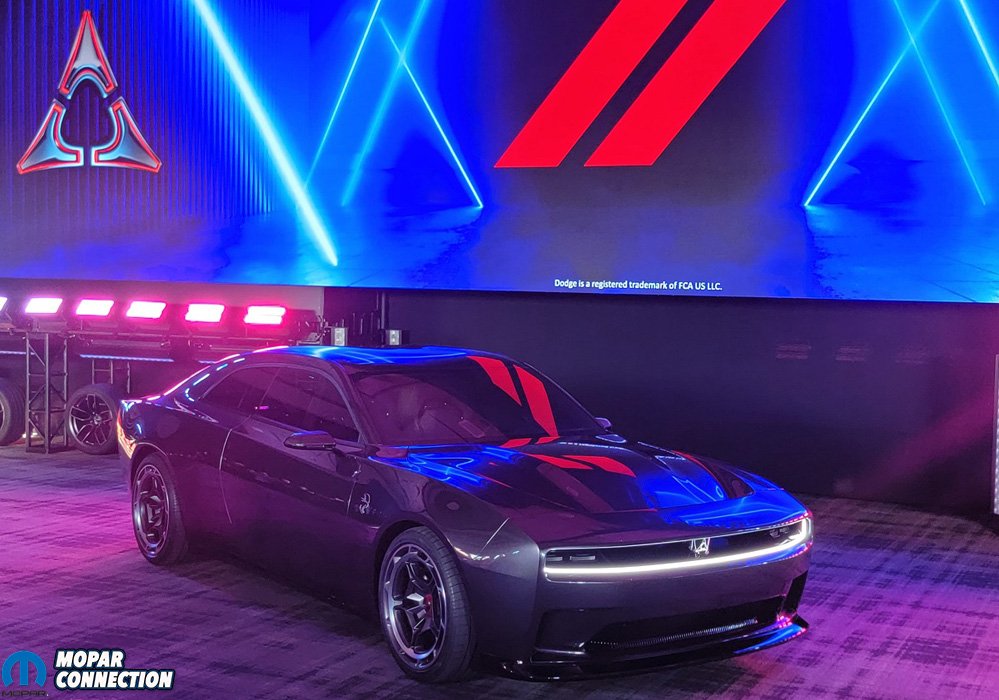




MAJOR disappointment…… i love the car BUT he specifically stated its a concept. Good luck getting a car that truly looks like this…. no specs no h/p no torque no availability. Oh look we built another show car you cant have now get excited for the bla were going to actually build. Whatever.
Can you get the exhaust to play Led Zeppelins “Stairway to Heaven”?
Sans the sound effect exhaust. I want to hear only what I need so if something goes wrong I can hear it. It is a gorgeous car.PLEASE BUILD IT!!!
i will never buy one. first i never owned a car with a risk of lighting up like a roman candle while parked or charged. second owners will have to not park it near a house or the house will burn down never mind parked in a garage. next the weight alone is like driving a bus that looks like a car and that means tire wear at a high rate. then there is the unavailable power needed to charge them all in a town or city. i am not even going to mention what happens if you run out of power in the middle of nowhere. what do you do? bring out a mobile charging station or tow it into the nearest charger in town? with the type of people i have encountered as a mechanic this is going to happen a lot. Try pushing one and you will find out fast how you need a gang to move it a inch. then there is the fact that when ever you need service you are going to a dealer with dealer price tags. it is illegal to work on one yourself because of how it is so dangerous. all this is going to translate into a money pit for the owner. ONE BIG PASS